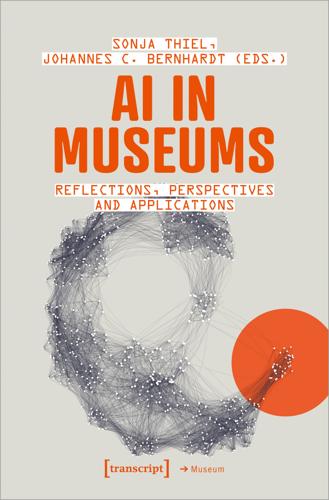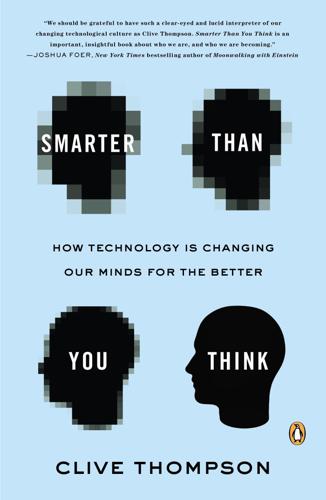telepresence robot
description: a remote-controlled, wheeled device with a display to enable video chat and videoconferencing
22 results

The Globotics Upheaval: Globalisation, Robotics and the Future of Work
by
Richard Baldwin
Published 10 Jan 2019
Believe it or not, the Heider-Simmel experiment tells us something about why telepresence robots are catching on fast. Many hospitals and some companies use telepresence robots already, and their use is growing rapidly since the impact on team interactions is palpable. The sense of being face-to-face is much stronger when the face moves, so to speak. In particular, doctors find that their words carry more authority with patients when they are talking via a telepresence robot instead of normal video Skype, or over the phone. While telepresence robots are useful for many interactions, a static form of telepresence technology is transforming the ease of holding meetings over long distances.
…
AR and VR are especially helpful in situations where two or more workers have to interact with something physical. But a great deal of work in offices depends upon regular meetings. As it turns out, digitech has created a marvelous substitute to actually being physically in the same room as other workers—it is called a telepresence robot. One company that is using it today is the online media site, Wired.com. TELEPRESENCE ROBOTS Emily Dreyfus writes for the San Francisco company Wired.com but lives in Boston. She used to participate remotely in staff meetings and bilaterals with her editor in the usual twentieth-century way—by phone, messages, and video conferences. But this wasn’t good enough for the spontaneous, creativity-enhancing brainstorming sessions that Wired was hoping for.
…
She used to participate remotely in staff meetings and bilaterals with her editor in the usual twentieth-century way—by phone, messages, and video conferences. But this wasn’t good enough for the spontaneous, creativity-enhancing brainstorming sessions that Wired was hoping for. Being a northern Californian sort of company, they decided to throw some digital technology at the problem. The tech took the form of a “telepresence robot” made by Double Robotics. The movements of the telepresence robot, which you can think of as Skype on wheels, are controlled by the writer in Boston, so the robot (in San Francisco) can wander around the office, attend meetings, hold one-on-one meetings, and so on. Picture the robot as a normal sized iPad on a stick with the stick attached to a Segway.

Machines of Loving Grace: The Quest for Common Ground Between Humans and Robots
by
John Markoff
Published 24 Aug 2015
However, at the Page party, the Yaskawa robot had no apparent difficulty finding the party favor boxes, each of which contained a commemorative T-shirt. Ironically, humans had packed each of those boxes, because the robot was not yet able to handle loose shirts. The Industrial Perception arm wasn’t the only intelligent machine at the party. A telepresence robot was out on the dance floor, swaying to the music. It was midnight in Woodside, but Dean Kamen, the inventor of the Segway, was controlling the robot from New Hampshire—where it was now three A.M. This robot, dubbed a “Beam,” was from Suitable Technologies, another small start-up just a couple of blocks away from Industrial Perception.
…
Hassan had been the original programmer of the Google search engine while it was still a Stanford research project. Willow Garage was his effort to build a humanoid robot as a research platform. The company had developed a freely available operating system for robotics as well as a humanoid telepresence robot, PR2, that was being used in a number of universities. That evening, both AI and IA technologies were thus in attendance at Page’s party—one of the robots attempted to replace humans while another attempted to augment them. Later that year Google acquired Industrial Perception, the box-handling company, for Rubin’s new robot empire.
…
The iPod and the iPhone were the first examples of this transition as a reimagining of the phonograph and the telephone. Augmented reality would also make the idea of telepresence far more compelling. Two people separated by great distance could gain the illusion of sharing the same space. This would be a radical improvement on today’s videoconferencing and awkward telepresence robots like Scott Hassan’s Beam, which place a human face on a mobile robot. Gary Bradski left the world of robots to join Abovitz’s effort to build what will potentially become the most intimate and powerful augmentation technology. Now he spends his days refining computer vision technologies to fundamentally remake computing in a human-centered way.

Augmented: Life in the Smart Lane
by
Brett King
Published 5 May 2016
Telemedicine robots are also making a huge impact on the future of medicine in hospitals and at home. The first telepresence robot that received FDA approval is being rolled out, literally, in hospitals around the country. The RP-VITA telepresence robot is a joint venture from InTouch Health Systems and iRobot. The ability for healthcare professionals to be able to move around in chaotic environments like hospitals and visit patients regardless of geography is creating efficiencies that will lead to that nostalgic nirvana of doctor house calls. Combine self-driving cars and these types of telepresence robots, and a new paradigm in health care is born as doctorbots can just call an Uber to make 20 to 30 house calls a day.

Rise of the Robots: Technology and the Threat of a Jobless Future
by
Martin Ford
Published 4 May 2015
By the same token, it is easy to envision remote-controlled machinery being operated by offshore workers who provide the visual perception and dexterity that, for the time being, continues to elude autonomous robots. A need for face-to-face interaction is another factor that is assumed to anchor a job locally. However, telepresence robots are pushing the frontier in this area and have already been used to offshore English language instruction from Korean schools to the Philippines. In the not too distant future, advanced virtual reality environments will likewise make it even easier for workers to move seamlessly across national borders and engage directly with customers or clients.
…
The suits lease for just under $2,000 per year and are already in use at over three hundred Japanese hospitals and nursing homes.21 Other near-term developments will probably include robotic walkers to assist in mobility and inexpensive robots capable of bringing medicine, providing a glass of water, or retrieving commonly misplaced items like eyeglasses. (This would likely be done by attaching RFID tags to the items.) Robots that can help track and monitor people with dementia are also appearing. Telepresence robots that allow doctors or caretakers to interact with patients remotely are already in use in some hospitals and care facilities. Devices of this type are relatively easy to develop because they skirt around the challenge of dexterity. The near-term nursing-care robotics story is primarily going to be about machines that assist, monitor, or enable communication.
…
See also basic income guarantee Social Security disability program, 43, 262 Social Security income, 222 solar power, 282 Solow, Robert, 65, 203 Sony Corporation, 4 Soviet Union, 161n Spain, 221 Sprague, Shawn, 281 Spread Networks, 114 stagflation, 33 stagnant wages, 34–38 Stanek, Roman, 107 Stanford University, 6, 70n, 182 MOOCs and, 132, 133, 135–136, 142 Staples, 17 Star Trek (television program), 246, 247 “StatsMonkey” software, 84 Stiglitz, Joseph, 203 student identification, online courses and, 136, 137 student loans, 124, 126, 140, 196, 214, 217, 251 Suitable Technologies, Inc., 8 Summers, Larry, 274n Sun Microsystems, 243 Super Crunchers (Ayres), 125 super-intelligence, 236, 236n Supplemental Nutrition Assistance Program, 201–202 surgical robots, 154–155 Stuxnet worm, 22 Switzerland, 268 SyNAPSE, 72, 80n Taibbi, Matt, 56 Target, Inc., 88, 159 taxes, 271–273, 275, 277–278 Taylor, John B., 37 Teamsters Union, 17 techno-feudalism, 204n, 266 technological change/progress economic growth and, 65 productivity and, 33 S-curves of, 66–67, 68 skill biased, 48 welfare of American workforce and, x technology disruptive, xviii, 66 golden era of, 51 graying workforce and, 220–223 historical narrative of modern, 51–58 investment in labor-saving, 227–228 manufacturing jobs and, 55 relationship between employment and, 175–176 unskilled worker wages and, 208–209 Tegmark, Max, 229, 237 telepresence robots, 119–120, 157 Terminator movies, 22, 157n Tesla, 3 textile industry, US, 8–9 Thatcher, Margaret, 258 “There’s Plenty of Room at the Bottom” (Feynman), 241 Thiel, Peter, 64, 236 thinking machine, 229–233. See also Artificial General Intelligence (AGI) 3D printing, 176, 177–181 three-dimensional chips, 70, 70n Thrun, Sebastian, 132, 133, 134, 135, 139, 182, 256 Time (magazine), 111, 160, 191, 235 Tokyo University entrance exam, creating artificial intelligence system to pass, 127–128 Toys “R” Us, 17 tragedy of the commons problem, 265 Transcend: Nine Steps to Living Well Forever (Kurzweil & Grossmann), 235 Transits—Into an Abyss (Iamus), 111 translation tools, 89–90, 120–121, 130 Triple Revolution report, 30–31, 250 trucks, automated, 190–191 Tunisia, 46 Turing, Alan, 80, 230 TurtleBot, 7 “21st Century Nanotechnology Research and Development Act,” 242 Twitter, 114 2001: A Space Odyssey (film), 157n Uber, 191, 209n Udacity, 133, 134–135, 142 underemployment, xvi, 49, 126 unemployment consumer behavior and, 211 education/job retraining and, 249–250 environmental effects of fear of, 283–284 long-term, ix, xvi, 45–46, 211, 280 machines and, ix–x rates of, 33, 41, 44–45, 172, 211–212, 249, 250, 276 youth, 221 unions, decline in power of, 57–58 United Auto Workers, 193 United States college graduates overqualified for occupations in, 251 consumer spending in, 54 economic stagnation in, 65 elder care in, 155 health care as precent of economy, 146 immigration policy and automated agriculture in, 26 income inequality in, 46–48 job-market polarization in, 49–51 taxpayer funding of basic information technology research in, 80–81 textile industry, 8–9 universal health coverage, 279 universal translator, offshoring and, 121 University of Akron, 141 University of Alabama, 141 University of California system, 140 University of California, Berkeley, Labor Center 14 University of Michigan, MOOCs and, 133, 137 University of Missouri, 141 University of Pennsylvania, MOOCs and, 133–134 University of Wisconsin, 138, 142 Urban Institute, 46 Urmson, Chris, 183–184 U-Systems, Inc., 152 value-added tax (VAT), 272–273 Vardakostas, Alexandros, 12–13 VAT.

Human + Machine: Reimagining Work in the Age of AI
by
Paul R. Daugherty
and
H. James Wilson
Published 15 Jan 2018
While this might help explain why customers could on occasion have to wait hours (or days) to get their cars fixed, it does little to ease their frustrations. So, what’s the best way to train mechanics, and is there a better way to deploy expert technicians to remote dealerships to minimize customer wait times? Audi found the answer through co-creation in the missing middle. The company deployed a fleet of telepresence robots called Audi Robotic Telepresence (ART) that not only helps train technicians in diagnostics and repair, but also speeds up the time it takes to make repairs in the first place. It’s an example of employee amplification along with AI-enabled training, combined into a whole new process. With ART, the expert technician doesn’t need to travel; instead, his or her voice and face are beamed across miles and emitted from ART’s speakers and high-resolution display.
…
See marketing and sales Salesforce, 85–86, 196 Samsung, 96–97 Samuel, Arthur, 41, 60 scale, 160 Schaefer, Markus, 148 scheduling agents, 196 Schnur, Steve, 194 scientific method, 69–77 hypotheses in, 72–74 observation in, 69–72 testing in, 74–77 SEB, 55–56, 59, 143–145, 160 second wave of business transformation, 5, 19, 47 security, IT, 56–58 semi-supervised learning, 62 Sensabot, 192 sensors in agriculture, 35–37 product development and, 29 retail shopping, 160–165 in robotic arms, 24–26 sentiment tracking, 176 SEW-Eurodrive, 149 Shah, Julie, 120 Shah, Uman, 98 Shannon, Claude, 40 Siemens, 23, 210 Sight Machine, 27 SigOpt, 77 Siri, 11, 96–97, 118, 146 6sense, 92 skills amplification of, 7 developing, 15–16 fusion, 12, 15–16, 181, 183–206 human vs. machine, 20–21, 105–106, 151 in manufacturing, 38 in marketing and sales, 100 in R&D, 83 Slack, 196 smart glasses, 143 smart mirrors, 87–88, 100 social media, 98, 176 software design, AI-enabled, 3 generative design, 135–137, 139, 141 Sophie, 119 SparkCognition, 58 speech recognition, 66 speech to text, 64 Spiegel, Eric, 210 Standup Bot, 196 State Farm, 99 Steele, Billy, 76 Stitch Fix, 110–111, 152, 204 Store No. 8, 162 Summer Olympics, 98 supervised learning, 60 supply chains, 19–39 data, 12, 15 sustaining, 107, 114–115, 179 jobs in, 126–132 See also missing middle S Voice, 96–97 Swedberg, Claire, 31 symbiosis, 7–8 symbol-based systems, 24, 41 Symbotic, 32–33 symmetry, 130 Systematica, 167 task performance training, 116 Tatsu, 196 Tay, 168–169 Taylor, Harriet, 91 telepresence robots, 159 Tempo, 176 Tesla, 67–68, 83, 190 testing, 74–77 Texas Medical Center, 178 Textio, 196 text recognition, 66 third wave transformation, 4–6 adaptive processes in, 19–21 time, rehumanizing, 12, 186–189 time-and-motion analyses, 4 Toyota Research Institute, 166 training/retraining, 15, 107, 114–115, 208 augmentation in, 143 auto technicians, 158–160 crowdsourcing/outsourcing, 120–121 curriculum development for, 178–179 data for, 121–122 education for AI, 132–133 empathy, 117–118 employee willingness toward, 185 feedback loops in, 174 for fusion skills, 211–213 holistic melding and, 200–201 human expertise and, 194–195 interaction modeling, 120 jobs in training AI systems, 100, 114–122 personality, 118–119 reciprocal apprenticing and, 12, 201–202 worldview and localization, 119–120 See also missing middle transparency, 213 transparency analysts, 125 trust of machines vs. humans, 166–168, 172–173 moral crumple zones and, 169–172 Twitter, 168–169 Uber, 44, 95, 169 uncanny valley, 116 Unilever, 51–52 Universal Robotics, 23 University of Ottawa, 70 University of Pennsylvania, 167 University of Pittsburgh Medical Center (UPMC), 188 unmanned vehicles, 28 unsupervised learning, 61–62 US Department of Justice, 45 user interfaces, 140 user needs, discovering, 156 V8, 98 Vallaeys, Frederick, 99 Vectra, 58 vehicle design anthropologists, 113–114 vehicles, autonomous, 67–68, 166–167, 189, 190 Vertesi, Janet, 201 vertical farms, 36 video recognition, 66 Virgin Trains, 47–48, 50, 59 vision.

Fall; Or, Dodge in Hell
by
Neal Stephenson
Published 3 Jun 2019
Its office chair had long since been poached, leaving more room for boxes of office supplies that tended to pile up there. Guests didn’t sit around the coffee table waiting to be buzzed in; their hosts knew where they were, and vice versa. The door leading back into the offices was propped open. Stationed next to it, plugged into a wall outlet, were charging docks for two different brands of telepresence robots: wheeled contraptions sporting flat-panel monitors thrust into the air at about the altitude of a person’s head, capable of purring around the office under the control of persons who weren’t physically present but who had the right passwords, and the right software installed on their systems.
…
Halfway through the talk, though, the robot stepped forward and walked up the length of the hall to a position where it could get a clearer view. El’s boys woke up and took notice. No one really knew for certain, but it was generally assumed that the robot—a telepresence device meant to serve as the sensorium of a person not physically in attendance—was being controlled from Europe by Elmo Shepherd. Early telepresence robots had just stood there stolidly when not moving, like statues; this one was more elegant. Even when it wasn’t going anywhere it never stopped making minute shifts in its attitude, transferring its weight from foot to foot and turning its head toward sound and movement. Its head was a prolate spheroid, matte gray and featureless except for a few tiny holes for cameras and microphones.
…
He’d sent signals that he would spend every penny he had defending himself in court. And everyone understood that by the time he could be tried, convicted, and sentenced, he’d be dead, or so mentally disabled that any sentence would be commuted on humanitarian grounds. He stayed home and he used telepresence robots to “travel” around the world, and he disabled their faces so that no one could “see” him. He’d become a sort of Man in the Iron Mask. A little less than a year after the conference in the San Juan Islands, Corvallis Kawasaki—who was in Amsterdam on other business—rented a car and had it drive him down to the border.

Heart of the Machine: Our Future in a World of Artificial Emotional Intelligence
by
Richard Yonck
Published 7 Mar 2017
In early 2015 METI published their new five-year government plan, “New Strategy for Robots,” which allocated nearly 5.3 billion yen to the use of robots in the nursing and medicine sector.4 Caretaker robots fall into one of a number of categories: • Rehabilitation robots used for physical therapy purposes, including robo-prosthetics for people with muscular motor issues, such as the loss of muscle control that can occur following a stroke. • Telepresence robots that aid in distance communications, monitoring, and promoting social interaction. • Service robots capable of providing direct care. Some of these robots may carry heavy items or even the patients themselves. Others can act as a form of external memory, helping users remember important items or engage them in exercises that help promote better memory.
…
See transcranial direct current stimulation (tDCS) technium, 23 technological evolution “AI-human symbiote,” 264 emotional empathy and, 265–266 and “ end of the world” scenarios, 261–262 and the future, 266–273 intention, 260–261 Matrix scenario, 262–263 peaceful coexistence, 263 technological singularity, 239 technophobia, 29–30 TEDWomen, 175–176 Tega, 118–119 Tegmark, Max, 132 teledildonic devices, 188–189 telepresence, 201 telepresence robots, 151 Terminator scenarios, 242, 262 Terror Management Theory (TMT), 99 Terrorist Surveillance Act (2006), 145 Texas A&M, 127 theory of mind (ToM), 83–84, 131 therapeutic companion robots, 148–150 “Three Laws of Robotics,” 165, 230–233, 262 3D printing, 211 Tilbury, Nancy, 57 TMS. See transcranial magnetic stimulation (TMS) Tobii, 73 ToM.

Robot Futures
by
Illah Reza Nourbakhsh
Published 1 Mar 2013
The real problem with this speculative line of discussion is that talk of mind duplication and immortality is not just too distant and too frightening—it is also desperately exciting and inspiring. Stories of technological utopia decades or centuries in the future do not solve the problems we face today, nor do they help us guide the development of technology in the near term for the best possible human good. The near future of telepresence, robotics, and communications technologies threatens to distract us, dehumanize our interactions, and erode our personal freedom and choice. The true challenge we face is in charting a new course that instead celebrates and nourishes individual well-being, accountability, and societal equity. To chart such a course we should become more deliberate and considered as we imagine and design technologies that carry us forward. 6 Which Robot Future?

12 Bytes: How We Got Here. Where We Might Go Next
by
Jeanette Winterson
Published 15 Mar 2021
In April 2021, Facebook rolled out updated avatars for their Oculus VR system that allow for a quintillion combinations, so you can represent yourself in VR the way you want to. 5G broadband and 4-8K video will allow for speed and visual complexity. International travel is expensive for companies, and bad for the planet – a real sense of being in another place could change how we do business. Telepresence robots allow you to beam your face into their screen, chat with others at the location, and physically move around an office complex or factory – if you need to inspect some merchandise, for instance. The bot moves autonomously. Ava Robotics have seen a surge in sales from high-end reale-state agents since Covid, as the bot can ‘walk’ through a large property or estate, with the potential buyer ‘inside’ the bot, in real time, taking a proper look at what is on offer

Uncanny Valley: A Memoir
by
Anna Wiener
Published 14 Jan 2020
Meetings were held over videoconferencing software, and people dialed in from wherever they happened to be: public transportation, pool loungers, unmade beds, living rooms with partners napping in the background. An engineer attended his daily stand-up meeting from an indoor climbing wall, gripping a plastic rock and wearing a harness. A telepresence robot rolled around the first-floor event space, lanky and conspicuous, a bridge between worlds. People came and went, operating on individualized schedules. I never knew whom I would run into at HQ, or whether I would be working alone. On every floor were mounted television screens displaying heat maps, and lists of employee avatars indicating who was in the building and where.

Future Crimes: Everything Is Connected, Everyone Is Vulnerable and What We Can Do About It
by
Marc Goodman
Published 24 Feb 2015
Thousands of Paro units have been sold globally, and they have proven particularly useful with advanced dementia patients in reducing levels of violence and improving mood. Recognizing the market need for elder-care robots, iRobot (maker of vacuums and killer bots) has opened a new division specifically to serve seniors. One of the fastest-growing types of elder-care bots are telepresence robots—machines that allow people to “move virtually through a distant building by remotely controlling a wheeled robot equipped with a camera, microphone, loudspeaker and screen displaying live video” of the person’s face controlling the bot over the Internet. Robots such as the MantaroBot and the EU’s GiraffPlus allow children to “beam in” from thousands of miles away and remotely drive a wheeled bot with an iPad-type face in order to interact with aging parents.
…
With the push of a button on an iPad, a doctor across town or around the world can direct the robot to the patient’s bedside, zoom in on his pupils, and even have a nurse place a stethoscope on his chest to remotely hear his heartbeat. Whether robots have better bedside manner is yet to be determined. Businesses too are starting to realize the value of having telepresence robots in the office, allowing employees to abstract their physical presence through remotely controlled devices. Companies such as Suitable Technologies and Double Robotics have models that cost around $3,000 and allow employees to work from home while their robotic alter egos wander the hallways at the office, walk up to colleagues at their desks, or catch up on all the latest gossip in the lunchroom.

Exponential Organizations: Why New Organizations Are Ten Times Better, Faster, and Cheaper Than Yours (And What to Do About It)
by
Salim Ismail
and
Yuri van Geest
Published 17 Oct 2014
Although videoconferencing was quite a hassle in the past, an organization can now leverage services such as Skype and Google Hangout, which are fast, easy to use and available on every device. Telepresence enables employees to work proactively from any location and interact on a global scale, reducing travel costs and improving well-being. Even greater improvement comes from Telepresence robots such as Beam, from Suitable Technologies, and Double Robotics, which leverage the user’s tablet. These robots even allow the user to be on multiple locations at once, which can greatly impact how to conduct business. While Telepresence lets people interact in a real environment, virtual reality allows interaction, collaboration, coordination and even prototyping in a virtual world.

Diaspora
by
Greg Egan
Published 1 Jan 1997
Moving about in public 5-scapes still made Orlando intensely self-conscious, less out of any fear of falling flat on his face than from a strong sense that he could take no credit for the fact that he didn't. His 5-body came equipped with numerous invaluable reflexes, as any real macrospherean body almost certainly would, but relying on these alien instincts made him feel like he was operating a telepresence robot programmed with so many autonomous responses that any instructions he gave it would be superfluous. He glanced down at the bottom of the window. The most trivial details in a 5-scape could still be hypnotic; the tesseract of the window met the tesseract of the floor along, not a line, but a roughly cubical volume.

The Fourth Age: Smart Robots, Conscious Computers, and the Future of Humanity
by
Byron Reese
Published 23 Apr 2018
Artificial limbs have been developed that are controlled by the brain. We will soon 3-D print new veins and arteries, and within a decade, replacement organs, such as the liver. Rehab robotic limbs allow someone to gradually regain the use of her or her arms and legs by gradually dialing down how much assistance they provide. Telepresence robots that allow doctors to virtually diagnose someone anywhere in the world are already a thing. Computer-controlled lasers are doing surgeries no human hand could perform. A company in the Netherlands has developed a pill that can travel to a certain part of the body to deliver its medicinal payload.

Bold: How to Go Big, Create Wealth and Impact the World
by
Peter H. Diamandis
and
Steven Kotler
Published 3 Feb 2015
In the aftermath of these reports, Foxconn’s president, Terry Gou, said he intended to replace one million workers with robots over the next three years.54 Besides replacing our blue-collar workforce, over the next three to five years, robots will invade a much wider assortment of fields. “Already,” says Dan Barry, “we’re seeing telepresence robots transport our eyes, ears, arms, and legs to conferences and meetings. Autonomous cars, which are, after all, just robots, will [start to] chauffeur people around and deliver goods and services. Over the next decade, robots will also move into health care, replacing doctors for routine surgeries and supplementing nurses for eldercare.

AI in Museums: Reflections, Perspectives and Applications
by
Sonja Thiel
and
Johannes C. Bernhardt
Published 31 Dec 2023
The new Robot Science Museum in Korea, for instance, is to be constructed solely by robots, based on plans by Melike Altınışık Architects from Istanbul. Actually, the use of robotics in museums dates back to the 1990s, among others in the form of Rhino, one of the first robot museum tour guides, at the Deutsches Museum in Bonn, Germany (Königs 2017). Since 2014, Pepper, a so-called telepresence robot developed by the French company Aldebaran (part of the German United Robotics Group since 2022) has made a particularly prominent appearance (Tyagi 2021). Pepper is used in museums worldwide and impresses with its multilingualism, including Swahili. Before the Smithsonian, for example, began using Pepper in 2018 to improve its visitor experience, it had as long ago as 1998 introduced AI-supported robotics in museum operations with the short-term experimental use of a tour robot called Minerva (Thrun/Beetz et al. 2000).

Smarter Than You Think: How Technology Is Changing Our Minds for the Better
by
Clive Thompson
Published 11 Sep 2013
At MIT’s Media Lab, the students are required to show off their new projects on Demo Day, with an audience of interested spectators and corporate sponsors. For years the unofficial credo was “demo or die”: if your project didn’t work as intended, you died (much as stand-up comedians “die” on stage when their act bombs). I’ve attended a few of these events and watched as some poor student’s telepresence robot freezes up and crashes . . . and the student’s desperate, white-faced hand waving begins. When you walk around meditating on an idea quietly to yourself, you do a lot of hand waving. It’s easy to win an argument inside your head. But when you face a real audience, as Weinberg points out, the hand waving has to end.

Dawn of the New Everything: Encounters With Reality and Virtual Reality
by
Jaron Lanier
Published 21 Nov 2017
Nothing to fear. 20. 1992, Out MicroCosm 1992 was the year when everything changed. Within VPL the year started just as I pleased, with an exotic torrent of activity. Wonderful projects: We connected people in Germany, California, and Japan in live, shared, virtual worlds and also got them to inhabit telepresence robots across continents. We slaved a robot hand to an avatar hand with enough grace to pick up surgical tools. Surgical simulation was extended to the brain. VPL had an ambitious secret project under way in the early 1990s called MicroCosm. This was to be the first self-contained VR system. For a base unit, it had tracking sensors and a PC with all manner of special cards embedded within a pretty, curvy plastic sculpture.

Imaginable: How to See the Future Coming and Feel Ready for Anything―Even Things That Seem Impossible Today
by
Jane McGonigal
Published 22 Mar 2022
But when my colleague Dylan Hendricks took over the role of planning the annual event, he had a suggestion: we should invite teenagers to attend. Ten years from now, today’s teenagers will be helping to shape society. Why not give them a seat at the table now? In 2016, twenty teenagers were invited to attend the Ten-Year Forecast conference, in person or by remote-controlled Beam telepresence robots. We let them tell all of us what they were excited about, and what they were worried about, for the future. Twenty out of 1.2 billion young people is a very small start. But that’s the best way to start—small, so that nothing will stop you, so that you actually do something and not only imagine it.

Surveillance Valley: The Rise of the Military-Digital Complex
by
Yasha Levine
Published 6 Feb 2018
He was simply reaffirming what he had told journalists back in 2013: “Let us speak no more of faith in man, but bind him down from mischief by chains of cryptography.”65 Snowden’s call to arms was taken up by people all over the world: Silicon Valley companies, privacy groups, corporate think tanks and lobbyists, political activists, and thousands of eager techies around the globe. Even Google’s Sergey Brin posed for a selfie with the infamous leaker—or the video-equipped “telepresence” robot that Snowden used to speak at conferences for him.66 Thanks to Snowden, the privacy movement was going mainstream, and the Tor Project was at the center of it all. No matter where you turned in the privacy world, people were united in their admiration for Tor as a solution to surveillance on the Internet.

The Transhumanist Reader
by
Max More
and
Natasha Vita-More
Published 4 Mar 2013
One might imagine a hybrid system where a virtual “central station” is surrounded by portals that open on to views of multiplereal locations. While in the station one inhabits a simulated body, but when one steps through a portal, the harness link is seamlessly switched from the simulation to a telepresence robot waiting at that location. The technical challenges limit the availability, “fidelity,” and affordability of telepresence and virtual reality systems today – in fact, they exist only in a few highly experimental demonstrations. But progress is being made, and it’s possible to anticipate a time, a few decades hence, when people spend more time in remote and virtual realities than in their immediate surroundings, just as today most of us spend more time in artificial indoor surroundings than in the great outdoors.

Artificial Intelligence: A Modern Approach
by
Stuart Russell
and
Peter Norvig
Published 14 Jul 2019
Savioke has put robots in hotels delivering products like towels or toothpaste to your room. The Helpmate and TUG robots carry food and medicine in hospitals (Figure 26.34(b)), while Diligent Robotics’ Moxi robot helps out nurses with back-end logistical responsibilities. Co-Bot roams the halls of Carnegie Mellon University, ready to guide you to someone’s office. We can also use telepresence robots like the Beam to attend meetings and conferences remotely, or check in on our grandparents. Autonomous cars: Some of us are occasionally distracted while driving, by cell phone calls, texts, or other distractions. The sad result: more than a million people die every year in traffic accidents.
…
D., 638, 1114 Taylor, C., 1030, 1092 Taylor, G., 329, 1114 Taylor, M., 357, 1113 Taylor, P., 900, 1114 Taylor, R., 986, 1104 Taylor, W., 190, 1090 Taylor expansion, 942 TD-GAMMON (backgammon program), 37, 224, 867 technological unemployment, 983, 1049 teddy bear, 1033 Tedrake, R., 986, 1114 Tegmark, M., 838, 1110 Teh, Y. W., 516, 837, 1099, 1108 telephone, 914 telepresence robots, 978 Teller, A., 160, 475, 1106 Teller, E., 160, 475, 1106 Teller, S., 984, 986, 1088, 1114 Tellex, S., 986, 1114 Templeton Foundation, 1037 temporal-difference learning, 844–848, 869 temporal inference, 483–491 temporal invariance, 811 temporal logic, 273 temporal projection, 267 temporal reasoning, 134–142, 255–264, 340–343, 479–517 Tenenbaum, J.